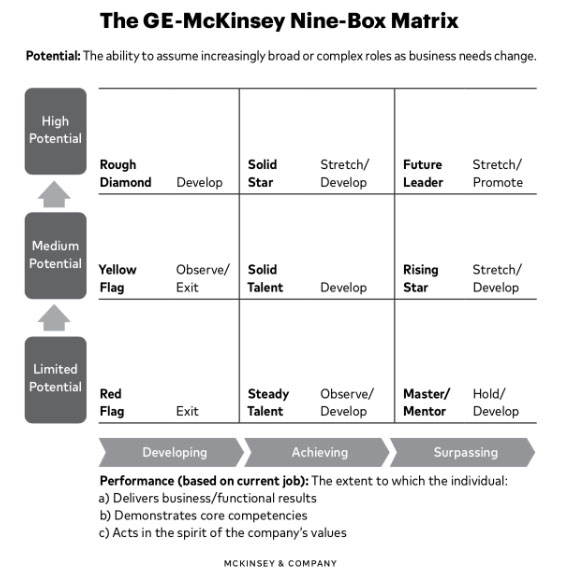Your Team May be Healthy and Talented, but is It Right for Where You’re Going?

I believe that your team is the most important asset in your business. If you’re large enough to hire a human resources professional, you should be treating that person as one of your most important right-hand leaders.
Over time, as you and your leaders deal with constant growth, you will need to focus more on your team. Making sure that you have a smart, talented, and culturally aligned group is very important for the long haul.
But in addition to having a healthy, talented, and retained team, you must be sure that you have the right team. This is especially important if you pivot into a different business that requires different skill sets, and/ or the scale of your business now requires different skill sets.
Below, I’ll outline the process I have used in various companies, most recently at Rosetta Stone, to determine whether a team is right for where the company is going.
Organizational Future State
I always recommend building a future state of what your organization should look like in terms of the roles and aptitude you will need and how it could look in the future.
If you spend an enormous amount of time building annual and multiyear plans, why wouldn’t you also do the work to think about what the future structure and team should look like to support the business? Don’t put current people in those spots, though, because a whole host of biases will enter into your decision-making and thought processes.
I don’t like to get fancy with these exercises. You can use a ton of online tools: Google Docs, Microsoft Word, etc.— whatever works for you! You will be surprised how hard it is, because you have to think about the types of new team members you need to attract or how you will grow current team members into your next stage of growth.
Review Talent Depth and Identify Critical Roles
Once you understand what the future state of your organization should look like, then you should dig into the details of the types of team members you have today. You might notice that you have some holes, such as skills or roles that you don’t have, etc.
Start by writing down all the skills and capabilities you need. For instance, perhaps you need to upgrade your sales leader because your current head of sales is lacking analytical skills. They have not built a strong sales operational capability within the organization and aren’t interested in doing that. Create a simple job description and the attributes that you would want or need to fill that gap. (It’s totally OK if your team is perfect, too. In that case, consider yourself lucky!)
Perform a Nine-Box Assessment
The nine-box process is an oldie but a goodie. It’s a great way to evaluate your current team. You basically plot them on a nine-box chart, as shown below.
I find that the nine-box model is powerful because of its simplicity and effectiveness. You plot “potential” and “performance” on a grid, with performance measured along the x-axis and potential along the y-axis. The most valuable position is the top right box. That person would be the highest-ranking in both performance and potential.
You should use the nine-box model for succession planning and to evaluate talent in your organization. This is literally one of those times that I like being “inside the box.” It forces me to make decisions and action plans on talent.
When you assess your employees, it’s important to understand what “performance” and “potential” are in this context. The “performance level” is what the employee does and how they do it. The “potential level” is what the employee is capable of attaining. Think of this as their raw ability, motivation to succeed, and commitment to the group or organization. Simply said, potential is the assessment of an employee’s ability to rise and to succeed in a more senior or expanded role; performance is how they are working and what they are delivering today.
Perform a Skill-Gap and Readiness Analysis
After you have evaluated your team(s), you should have a list of skills that are consistent for your organization and that should be worked on. Look at your team, and determine any gaps in these key areas. As the manager and leader, you should be allocating your time to determining development actions that need to be taken to enable their growth.
Pay special attention to each team member’s “time to readiness”—how long will it take to develop this person? Readiness is a tricky topic. Every good coach or manager does a good job of highlighting areas of improvement in isolated sets of development practice.
Readiness is one of those areas where I think it’s wise to find one or two areas of development. It’s an obvious red flag if one of your key lieutenants has a tremendous amount of work to do across all the skills. Some of the skills that are easier to approach are obtaining more experience and specialized skills. You can focus on giving that team member more challenging tasks or special projects, or you can invest in education or certificate programs for them.
The harder skills to solve are things like “initiative.” You can expose the team member to tasks as small as running a key business review every month, so they get experience leading a meeting, or something larger, like leading an acquisition. However, I have found that some team members just don’t have that initiative gene. They are hard-wired not to have it.
Perform Development Planning
Lastly, have a development plan. But also have your team members draft and devise their own plan. If you can afford it, have the employees seek help from an executive coach. The key is to have a plan so that the skills gaps are being addressed and you are their accountability partner. I have done this process many times, and it becomes even more powerful if you are willing to share your development plan with a wider group of people.
Another way you can help is to introduce “stop/start/keep doing” surveys with your team. You literally ask your teams what each team member should start doing, stop doing, and keep doing. Use this practice to better provide feedback and to keep the process of skill-gap analysis on track. This is just good management.
The worst thing you can do as a leader is not have open and honest conversations—especially if everyone’s aligned on being a market leader. Help your team members grow, and cultivate a culture of learning.
Final Word
If you could wave your magic wand, you would love to have the best talent at every position. The best way to have an awesome team is to hire the smartest people and grow them along with your graph. But that’s not always possible.
You need to put in the time cultivating and growing people. That is more than just doing a one-on-one and asking your employee how their weekend was. You must hold yourself accountable to building out your team and how that team should and can develop over time.
The following is adapted from Unlock: 5 Questions to Unleash Your Company’s Hidden Power. For more advice on finding the right team, you can find Unlock on Amazon.
Written by Matt Hulett.
Have you read?
The Art of Teams by Leo Bottary.
5 Ways To Build A Fool-Proof Marketing Strategy.
Who Should Get to Decide How and Where we Work by Val King.
The thing you need to fix before your next change program by Dr. Paige Williams.
Bring the best of the CEOWORLD magazine's global journalism to audiences in the United States and around the world. - Add CEOWORLD magazine to your Google News feed.
Follow CEOWORLD magazine headlines on: Google News, LinkedIn, Twitter, and Facebook.
Copyright 2025 The CEOWORLD magazine. All rights reserved. This material (and any extract from it) must not be copied, redistributed or placed on any website, without CEOWORLD magazine' prior written consent. For media queries, please contact: info@ceoworld.biz









